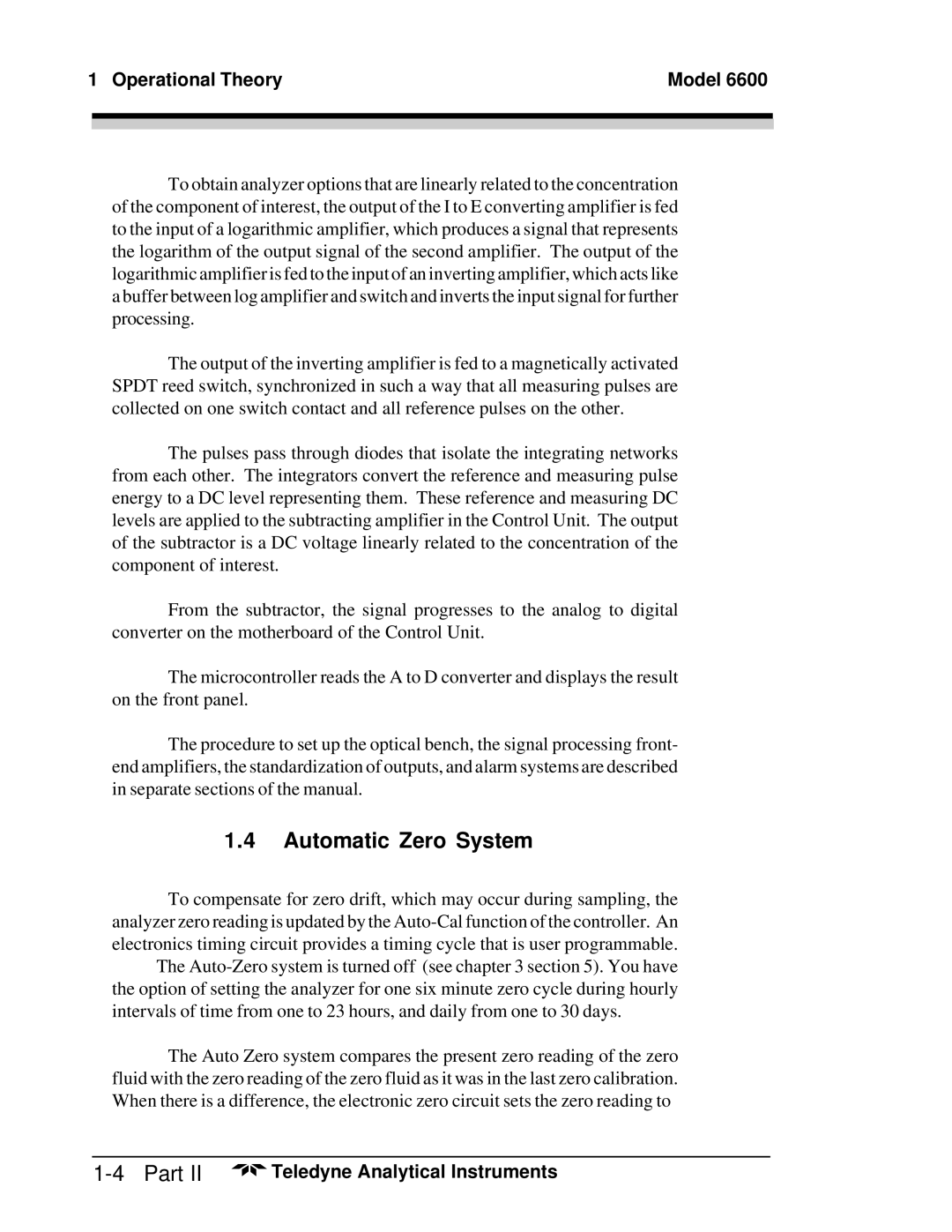1 Operational Theory | Model 6600 | |
|
|
|
|
|
|
|
|
|
To obtain analyzer options that are linearly related to the concentration of the component of interest, the output of the I to E converting amplifier is fed to the input of a logarithmic amplifier, which produces a signal that represents the logarithm of the output signal of the second amplifier. The output of the logarithmic amplifier is fed to the input of an inverting amplifier, which acts like a buffer between log amplifier and switch and inverts the input signal for further processing.
The output of the inverting amplifier is fed to a magnetically activated SPDT reed switch, synchronized in such a way that all measuring pulses are collected on one switch contact and all reference pulses on the other.
The pulses pass through diodes that isolate the integrating networks from each other. The integrators convert the reference and measuring pulse energy to a DC level representing them. These reference and measuring DC levels are applied to the subtracting amplifier in the Control Unit. The output of the subtractor is a DC voltage linearly related to the concentration of the component of interest.
From the subtractor, the signal progresses to the analog to digital converter on the motherboard of the Control Unit.
The microcontroller reads the A to D converter and displays the result on the front panel.
The procedure to set up the optical bench, the signal processing front- end amplifiers, the standardization of outputs, and alarm systems are described in separate sections of the manual.
1.4Automatic Zero System
To compensate for zero drift, which may occur during sampling, the analyzer zero reading is updated by the
The
The Auto Zero system compares the present zero reading of the zero fluid with the zero reading of the zero fluid as it was in the last zero calibration. When there is a difference, the electronic zero circuit sets the zero reading to
| Teledyne Analytical Instruments |
